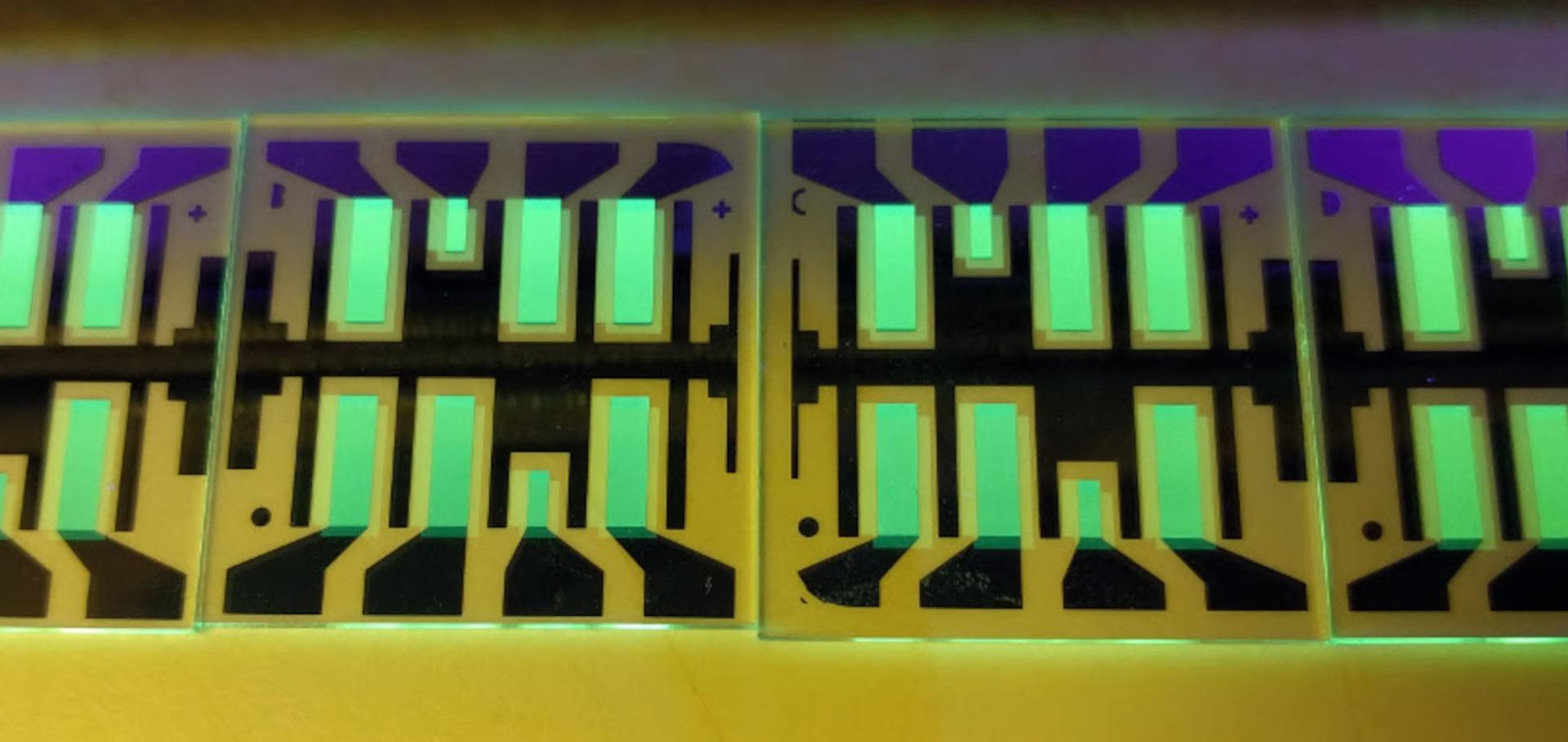Characterization of tandem organic solar cells comprising subcells of identical absorber material
Progress in Photovoltaics: Research and Applications 23:10 (2015) 1353-1356
Abstract:
Recently organic tandem solar cells with record efficiency had been shown comprising identical absorber materials in both subcells. Such structures pose new challenges for characterization. The standard test methods for measuring spectral response of tandem solar cells can not be applied. The standard procedures demand for different bias illumination during measuring spectral response allowing to select the subcell being current limiting. With subcells comprising identical absorber materials, thus having identical absorption spectra, such a selection is not trivial. In this paper, we show that with the help of detailed optical simulations of such tandem organic solar cells, their characterization is possible, and we apply the proposed method to a sample structure.Characterization of tandem organic solar cells comprising subcells of identical absorber material
Progress in Photovoltaics Research and Applications Wiley 23:10 (2015) 1353-1356
Experimental and theoretical study of phase separation in ZnPc:C60 blends
Organic Electronics: physics, materials, applications 27 (2015) 183-191
Abstract:
© 2015 Published by Elsevier B.V.Understanding the relationship between the absorber layer microstructure and the power conversion efficiency is of paramount importance to further improve the efficiency of organic solar cells. Utilizing transmission electron microscopy (TEM), (photo-)conductive atomic force microscopy ((p)cAFM), 3D drift-diffusion simulations, and density functional theory, we reveal the microscopic origins of phase-separation in a blend of zinc phthalocyanine (ZnPc) and CCharacterization of tandem organic solar cells
Nature Photonics Nature Publishing Group 9 (2015) 478-479
Enhanced Amplified Spontaneous Emission in Perovskites Using a Flexible Cholesteric Liquid Crystal Reflector.
Nano Letters 15:8 (2015) 4935-4941


